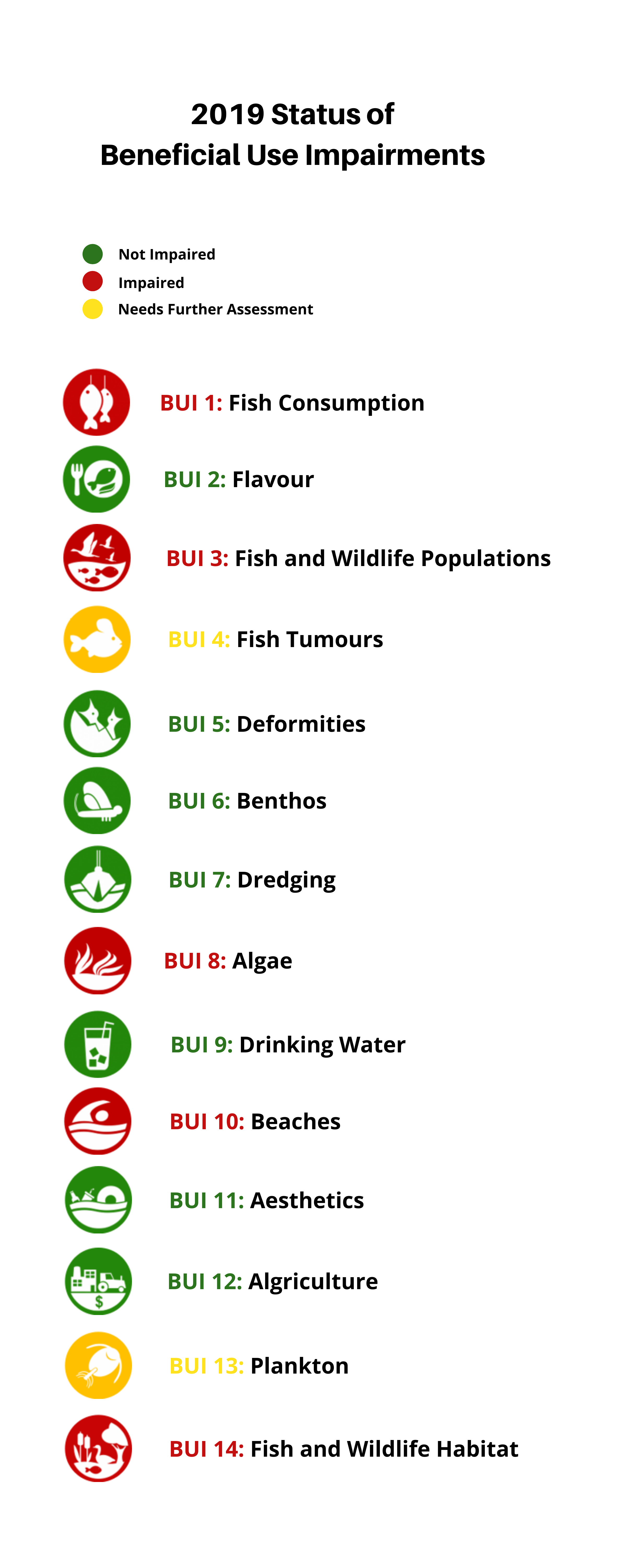St. Lawrence River (Kaniatarowanenneh) Area of Concern
Background / Context
The St. Lawrence River (Kaniatarowanenneh) at Akwesasne, Cornwall, Massena was designated a cross border Area of Concern (AOC) by the governments of Canada, the United States, and Akwesasne in cooperation with the International Joint Commission (IJC) in 1987. This decision took place through the Great Lakes Water Quality Agreement (GLWQA) which was signed between the United States and Canada in 1972
At that time the Mohawk Council of Akwesasne played a key role in seeking this designation due to the widespread significant impacts experienced over decades by Akwesasronon as a result of extensive industrial pollution.
The Area of Concern includes approximately 80 km (48 miles) of the St. Lawrence River from the Moses Saunders Dam at Cornwall to the eastern outlet of Lake St. Francis located within Akwesasne Territory. The AOC includes portions of the Grasse, Raquette, and St. Regis rivers.
This AOC is perhaps the most unique of the 43 overall Areas of Concern (within the Great Lakes-St. Lawrence River watershed. It is also one of five bi-national Areas of Concern. The entire AOC is divided by the international border: jurisdiction in the United States portion is shared between the United States, New York State, and the Saint Regis Mohawk Tribe; while jurisdiction in the Canadian portion is shared between Canada, Ontario, Québec and the Mohawk Council of Akwesasne. Each of these government bodies has its own respective environmental health legislation, evaluation criteria, and standards.
The IJC established that each Area of Concern had a responsibility to create its own Remedial Action Plan (RAP) to identify environmental issues of concern and recommend specific remediation strategies. The St. Lawrence River Area of Concern has been, up to this point, divided between Canada and the United States with Akwesasne at the epicenter. Subsequently, two Remedial Action Plans were created. The “Canadian” side of the AOC, involving MCA, Ontario, and the federal government of Canada released a document entitled the St. Lawrence Remedial Action Plan Stage 1 Report in 1992. Recommended actions to address the aforementioned concerns were subsequently outlined in Stage 2 – Great Lakes, Great River Report © 1997. In 2020 oversight of the northern portion of the AOC is governed by the Environment and Climate Change Canada Great Lakes Office and the Ontario Ministry of Environment, Conservation, and Parks (MECP).
The Saint Regis Mohawk Tribe, partnering with New York State, on the “U.S.” side of the AOC, delivered their own report in 1995 called the St. Lawrence River Remedial Action Plan at Massena, New York. The southern portion of the AOC is also a U.S. EPA Superfund Site at Massena, New York.
The identified environmental issues or challenges on the St. Lawrence River at Akwesasne are technically called “Beneficial Use Impairments” or BUIs. The following BUIs were identified in the Akwesasne, Cornwall, Massena area of the River:

If a particular BUI is found to be impaired, then the next steps for remediation need to be identified. Specific criteria need to be met for each BUI to transition from an impaired to a not impaired status. These criteria are established for each AOC. If all recommendations for recovery have been taken and no further actions are necessary and the majority of evidence shows a BUI is on its way to recovery, then the BUI should be considered for re-designation. BUI re-designation is a process that includes input from Subject Matter Experts, governments, and community members. BUI re-designation is tackled one BUI at a time. Once all the BUIs in an AOC have seen their criteria met, an Area of Concern may then be considered for overall re-designation from an impaired to a not impaired status.

